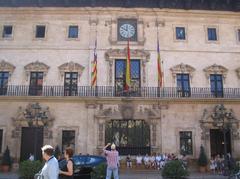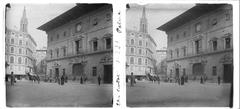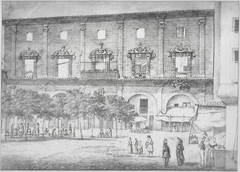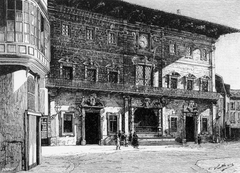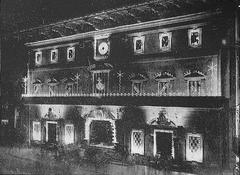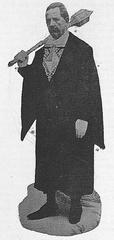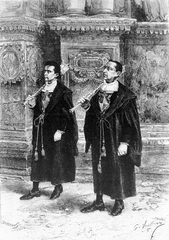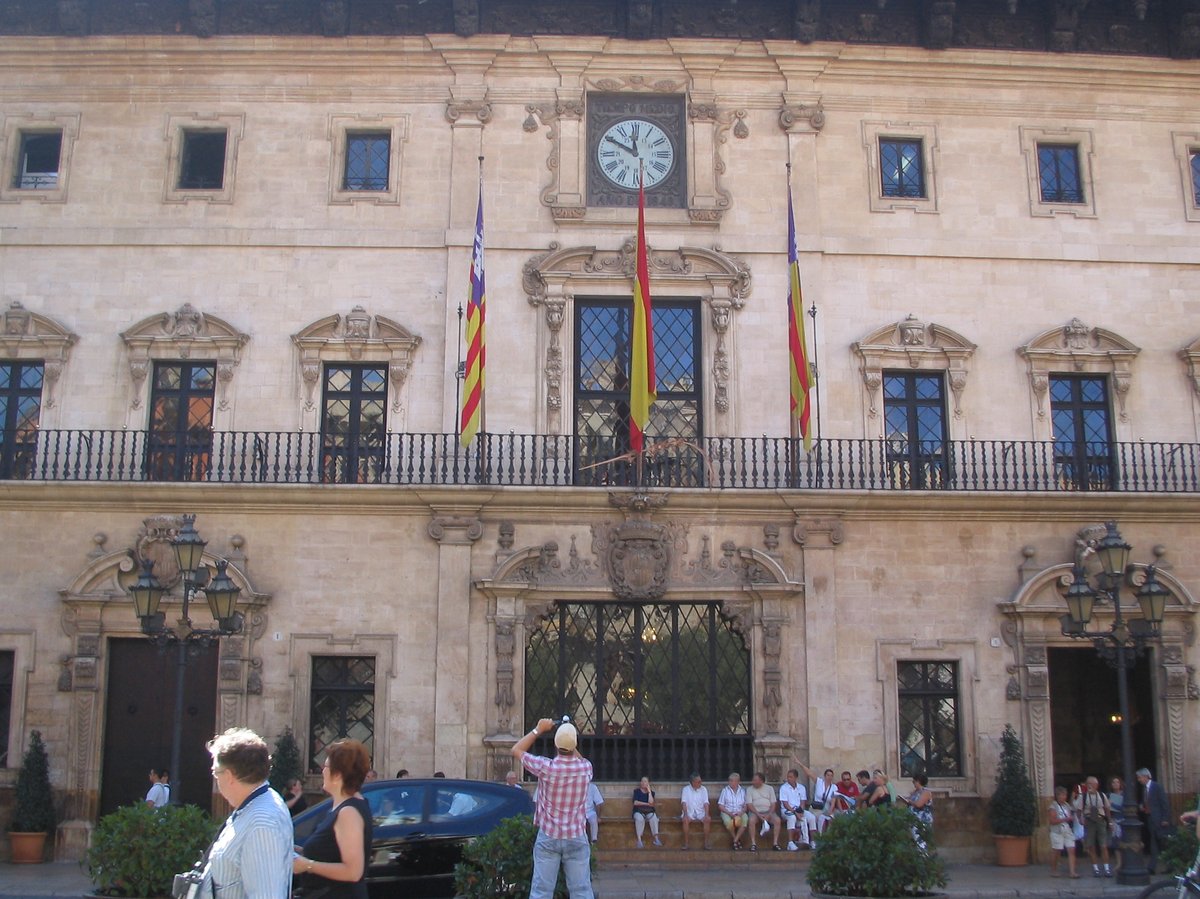
Palma City Hall Visiting Hours, Tickets, and Historical Sites Guide
Date: 14/06/2025
Introduction to Palma City Hall
Situated in the heart of Palma’s historic old town, Palma City Hall—locally known as Ajuntament de Palma—stands as a testament to Mallorca’s vibrant civic history and architectural evolution. As the city’s administrative center since the 17th century, this iconic building not only reflects centuries of governance but also narrates the transformation of Palma from its Roman roots through Moorish influence, Christian reconquest, and into modern times. The City Hall’s Baroque façade, adorned with Gothic and Renaissance details, encapsulates the city’s changing architectural and cultural landscape (visitpalma.com, accesmallorca.com).
Inside, visitors can explore historic chambers, including a council room decorated with portraits of significant Mallorcans, which highlight the City Hall’s ongoing role as a custodian of local heritage. Located on Plaça de Cort—a lively square famous for its ancient olive tree and festive events like the Sant Sebastià festival—the City Hall is a focal point for both civic and cultural life (callandridemallorca.com, thenavigatio.com).
This guide provides essential information for visitors, including current visiting hours, ticketing, accessibility, guided tours, and advice on nearby attractions. Whether you are a history buff, architecture enthusiast, or simply curious, Palma City Hall offers an engaging window into the city’s past and present. Refer to the official resources and tourism platforms linked throughout this guide for the latest updates (palma.cat, visitpalma.travel).
Table of Contents
- Historical Overview
- Civic and Cultural Importance
- Architectural Features and Symbolism
- Restoration and Preservation
- Visiting Palma City Hall
- Visitor Experience
- Frequently Asked Questions (FAQ)
- Conclusion and Recommendations
- References
Historical Overview
Roman and Medieval Foundations
The site of Palma City Hall traces its importance back to Roman times, when the city—then known as Palmaria—was founded around 120 BCE as a strategic outpost. Roman-era remains still lie beneath modern Palma, with archaeological discoveries happening during renovations in the old town (seemallorca.com, routesandtrips.com).
After the Romans, control passed through the Vandals, Byzantines, and Moors. During Moorish rule (902–1229), Palma—then called Medina Mayurqa—developed its characteristic maze of narrow streets, including the area where City Hall stands today. The Christian reconquest in 1229 by James I of Aragon shifted civic structures, establishing the City Hall as a central administrative site (britannica.com).
Development of the City Hall
The current City Hall building was constructed between 1649 and 1680 on the site of the former Hospital of Sant Andreu (callandridemallorca.com). Designed by Re Bauca, Miquel Oliver, and Bartomeu Calafat, the building replaced earlier municipal structures to accommodate the needs of the growing city (palma.cat).
Civic and Cultural Importance
Plaça de Cort, where City Hall is located, has long served as the civic heart of Palma, hosting major public events, festivals, and ceremonies. City Hall is not just an administrative center; it is a symbol of Palma’s resilience and autonomy, having witnessed political changes from medieval self-governance to integration into the Spanish state (accesmallorca.com). The building also houses an impressive collection of portraits and historic documents, underlining its role as a living archive.
Architectural Features and Symbolism
Façade and Exterior
The City Hall’s Baroque façade, completed in 1675 by sculptor Francesc Dragó and stonemason Jaume Caragol, is a visual masterpiece. Its striking wooden eave, elaborate balcony, and the iconic Reloj d’en Figuera clock define the exterior (callandridemallorca.com, esprincep.com). The façade features whimsical details, such as a snail and a dragon—playful signatures from the artisans (esprincep.com).
A unique feature is the stone bench, known as the ‘banco del perezoso’ (lazy man’s bench), with legends about townsfolk lounging and inventing excuses to avoid work (visitpalma.com).
Interior
The interior preserves much of its 17th and 18th-century layout, including the council chamber overlooking Plaça de Cort and period furniture. Large portraits of kings and notable Mallorcans, along with festival mannequins (“gegants”), are displayed within.
Restoration and Preservation
Major restoration efforts in the late 20th and early 21st centuries have ensured City Hall’s historical integrity while adapting it for contemporary use. These projects have involved local and immigrant labor and are part of broader initiatives to maintain Palma’s old town as a vibrant historical and civic district (britannica.com).
Visiting Palma City Hall
Hours, Tickets, and Accessibility
- Visiting Hours: Guided tours are available every Sunday: 11:00 (Catalan), 12:00 (Spanish). English tours take place on the first Sunday afternoon of each month. Weekday open hours typically run Monday–Friday, 9:00 AM–2:00 PM, but public access may be limited outside tour times. Always confirm on the official website before your visit.
- Tickets: Entry is free, but guided tours require pre-registration due to limited group size. Reserve your spot on the official booking page.
- Accessibility: The building is generally accessible, with ramps and elevators, but some historic areas may have steps or uneven surfaces. Contact ahead for specific needs.
- Photography: Allowed except during official events; flash and tripods may be restricted.
Guided Tours and Special Events
Guided tours, available in Catalan, Spanish, and English, provide insights into the building’s history, architecture, and local traditions. The City Hall frequently participates in festivals and public celebrations, especially during Sant Sebastià, when the “gegants” parade.
Travel Tips and Nearby Attractions
- Location: Plaça de Cort, 1, 07001 Palma, Illes Balears, Spain (palma.cat)
- Nearby Sites: Palma Cathedral (La Seu), Almudaina Palace, Gran Hotel, Plaça d’Espanya, Passeig des Born, Las Ramblas, and Parc de la Mar.
- Transport: Easily accessible by foot, bicycle, or public transport; limited parking nearby.
Visitor Experience
Visitors can expect an engaging tour of the City Hall’s historic interiors, including the council chamber, art galleries, and festival mannequins. The experience is enriched by the lively atmosphere of Plaça de Cort and proximity to Palma’s other major landmarks. Self-guided exploration is possible during open hours, while guided tours delve deeper into the building’s history and symbolism.
Frequently Asked Questions (FAQ)
What are Palma City Hall’s visiting hours?
Guided tours: Sundays at 11:00 (Catalan), 12:00 (Spanish), and the first Sunday afternoon of the month (English). General visiting: Monday–Friday, 9:00 AM–2:00 PM. Check here for current schedules.
Are tickets required?
Guided tours require free pre-registration. General entry is usually free; some special events may require tickets.
Is City Hall accessible for visitors with disabilities?
Yes, but some historic areas may present challenges. Contact City Hall for specific accommodations.
Can I take photos inside?
Photography is allowed except during official events or in restricted areas.
Are tours offered in English?
Yes, on the first Sunday afternoon of each month.
What else can I see nearby?
Palma Cathedral, Almudaina Palace, Old Town streets, Plaça d’Espanya, and more.
Conclusion and Recommendations
Palma City Hall is an enduring symbol of Mallorca’s civic pride and architectural brilliance. Its central location, iconic façade, and rich historical narrative make it an essential stop for anyone exploring Palma. With free entry, multilingual guided tours, and proximity to other major attractions, the City Hall offers a rewarding cultural experience. Enhance your visit by reserving a guided tour, timing your trip to coincide with local festivals, and exploring the vibrant surroundings of Plaça de Cort.
For the latest information on visiting hours, tickets, and events, consult the official Palma City Hall website or VisitPalma. Download the Audiala app for real-time updates, interactive maps, and exclusive content about Palma’s top historical sites.
References
- Palma City Hall: Visiting Hours, Tickets, and Historical Insights into Palma’s Iconic Monument (visitpalma.com)
- Palma City Hall Visiting Hours, Tickets & Architectural Significance: A Complete Guide to Palma’s Historic Civic Landmark (callandridemallorca.com)
- Palma City Hall Visiting Hours, Tickets, and Cultural Significance (accesmallorca.com)
- Palma City Hall Visiting Hours, Tickets & Guide to Palma’s Historic City Hall (palma.cat)
- Palma City Hall Visiting Hours, Tickets & Guide to Palma’s Historic City Hall (visitpalma.travel)
- Palma City Hall Visiting Hours, Tickets, and Cultural Significance (thenavigatio.com)
